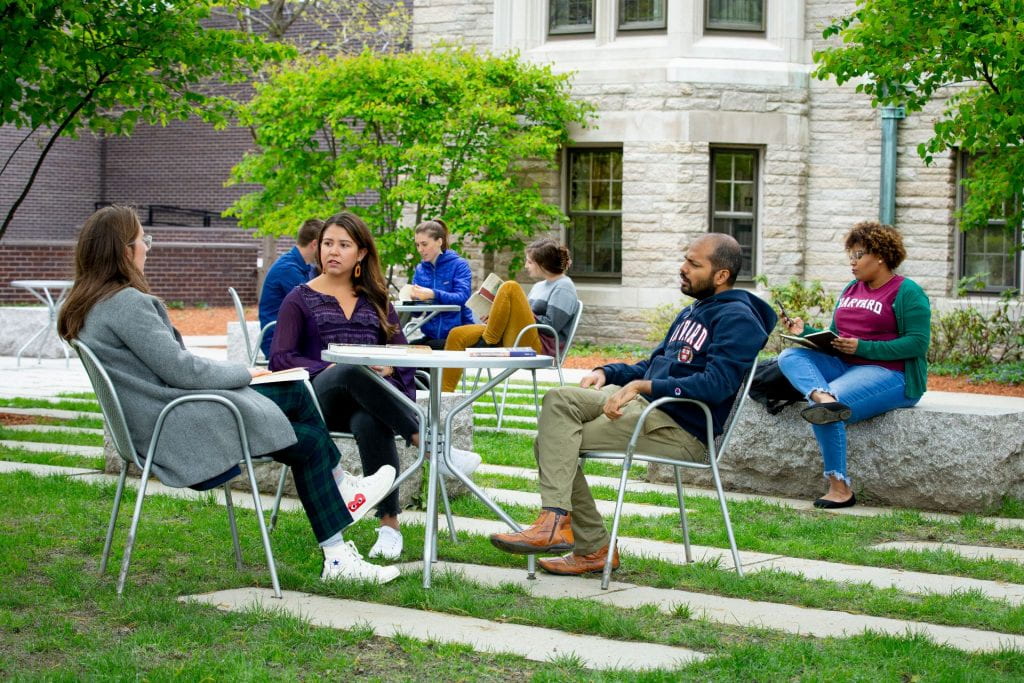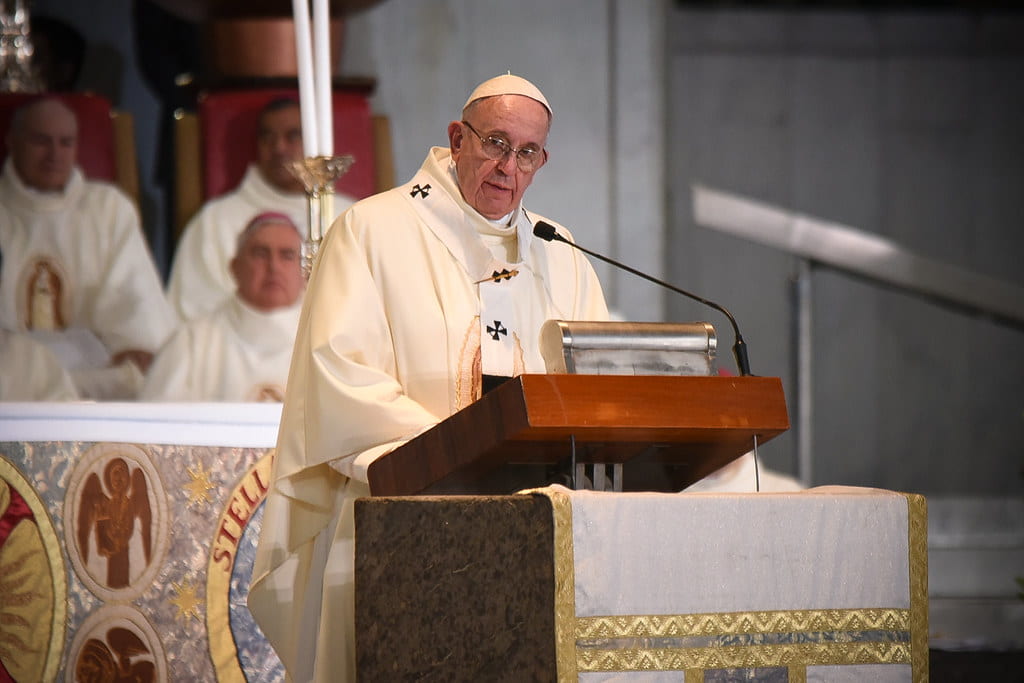By Lauren R. Kerby
Lauren R. Kerby is the education specialist for the Religious Literacy Project and a lecturer on religious studies at Harvard Divinity School.

At the Religious Literacy Project, a fundamental component of how we teach about religion is what we call the nondevotional approach. By this we mean that teachers and students do not take sides or make normative truth claims about who is more right or more authentic in a given tradition. Instead, they step back and observe multiple competing perspectives in order to understand why people do what they do and how religion informs the choices they make.
For many people, this is a new way of talking about religion. Unless you’ve taken a religious studies class, you may have never been asked to observe and discuss religion in this way. And it can be confusing! But one thing that can help is to focus on what kind of conversation you want to have.
Do you want to have a conversation about who is right or wrong in a particular tradition? Is your goal for the conversation to determine how something “should” be? Those are devotional conversations.
Do you want to have a conversation about how people’s different religious commitments may influence them in a particular situation so that you can better understand the situation (not take a side)? Is your goal deeper understanding of other people, rather than identifying which party you most agree with? Those are nondevotional conversations.
We find this approach useful because it directs students toward questions about what is happening and why, rather than debating who is right. In a classroom with students representing a variety of religious traditions or different communities within the same religion tradition, that’s a really important shift. It invites everyone into the conversation without making students feel as if they’re expected to defend their own position.
Of course, this is not the only way to study or teach about religion! There are plenty of educational contexts (such as private religious schools) where you may want to have a devotional conversation. It may be expected and appropriate to make claims about truth and authenticity and to weigh the validity of one claim against that of another.
For teachers taking a nondevotional approach, though, it can be helpful to remind students of what the conversation is about. If students are slipping into a nondevotional conversation, you might ask them what the goal of the current discussion is to help them identify how they’re trying to adjudicate between sides. They can then identify a new goal and adjust their conversational course.
One challenge with this approach can be remembering that both positive and negative judgments are normative. “Normative” means saying that something should or shouldn’t be a certain way, or that it’s right or wrong to be a certain way. It’s an implied judgment about what is “normal.” In many cases, this judgment may be not be stated outright, but it can be inferred from statements that declare a religion is one thing without leaving room for some variation. These statements imply that the variations do not count as that religion. Keeping the goals of the conversation in mind can help students navigate this challenge.
The biggest challenge with this approach, though, is that when we are studying religion—even nondevotionally!—we are often studying the devotional statements and actions of others. We study the statements of religious people, the words of sacred texts, artistic expressions of religious truths, the ritual practices that enact without words how the world should be, and so on. It can be tempting to respond in kind, entering into a conversation with the source about what is real, correct, or normative.
For students who practice a religious tradition, it can be especially easy to fall into this kind of conversation, drawing on their own experience as a source of authority. But one phrase we say frequently is that everyone’s expression of their religion is authentic to them but not the exclusive way that tradition can be expressed. We honor students’ religious experiences, but invite them to consider how other people may have different experiences that do not invalidate their own.
As you consider the kinds of conversations you want to have in your classroom, we invite you to work through the following example on your own to practice identifying devotional and nondevotional conversations:
On February 18, 2017, Pope Francis said the following about President Trump during an interview on the papal plane:
“A person who thinks only about building walls, wherever they may be, and not of building bridges, is not Christian. This is not the Gospel. As far as what you said about whether I would advise to vote or not to vote, I am not going to get involved in that. I say only that this man is not Christian if he has said things like that. We must see if he said things in that way and I will give him the benefit of the doubt.”
Before moving on, take a few minutes to respond to this statement. Jot down some notes about your initial reaction and what you would want to say.

Your first inclination with this example may be to agree or disagree with the Pope and start to explain why. You may want to join the conversation–a conversation that is frequently had all over the United States among Christians and non-Christians alike–and use your own knowledge and experience of Christianity to make your case. This impulse is understandable, and in some contexts it is appropriate. But it is also devotional, because it contributes to a normative conversation about who is or isn’t a Christian.
Religious literacy asks us to contribute to a different conversation. Our conversation considers how religion works in the world and how it motivates people’s choices. And we try to do that without judging whether a particular manifestation of religion is authentic, or true, or sincere, or consistent.
In our nondevotional conversation, we might consider the political circumstances of the Pope’s statement and how it might influence Catholics and others in the U.S. We might study the theological arguments made for and against immigration within Catholicism. We might examine how lay Catholics feel about immigration and what they’re doing about it. We might also consider responses to the Pope’s statement from the Christian Right that fit into a long tradition of anti-Catholicism in the United States. Or we might consider broader questions of how religious leaders and politicians seek to influence their respective constituencies.
These are nondevotional conversations that take religion seriously as something that helps people to make sense of the world and to decide how to act. They ask the questions that help us understand how religion is embedded in culture, and they yield a more nuanced understanding of a complex reality. We encourage you to try this strategy in your own classroom.
Author’s note: I would be remiss if I did not shout out They Say/I Say: The Moves that Matter in Academic Writing. This fantastic little book is where I first learned to think of academic writing and scholarship at all levels as a conversation. It has nothing to do with religion, but it’s an amazing resource for teaching students to write and think about any topic.

